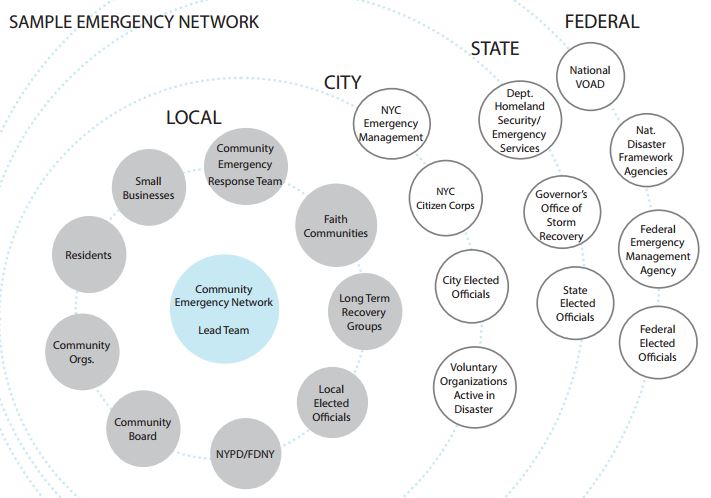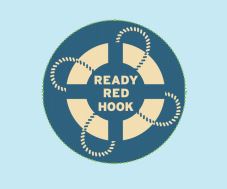4. BUILD AN EMERGENCY NETWORK
OBJECTIVE:
-
Use your community resource directory to build a network of contacts and key partners who may play a valuable role in an emergency response.
THINGS TO CONSIDER:
Building relationships in your community is one of the most powerful things you can do to prepare for an emergency. Communities with strong social ties are able to communicate, identify needs, and coordinate resources more effectively. Developing an emergency network during non-emergency times will help your community be much more prepared to respond to and recover from emergencies of all shapes and sizes.
THINGS TO CONSIDER:
You have defined your community, explored its key demographics, identified and mapped resources, and understand its vulnerabilities. It is time to put all of these pieces together to create a robust network that can be leveraged in the event of an emergency. This network will be your community’s primary tool for communicating, identifying needs, and connecting people to resources.
Use the questions below and the tools you have already developed, like the community overview, resource directory, and maps to compile a list of potential members. Focus on individuals/organizations that have a capacity to communicate, reach vulnerable individuals, and have resources that may be helpful.
-
Are there long-time residents who have an exceptional knowledge of the community?
-
How can the most vulnerable individuals in your community be represented?
-
Are there organizations or businesses that conduct regular local outreach or serve as natural gathering spaces in your community?
-
Are there organizations in your community who are already doing emergency planning? Some examples:
-
Long-term Recovery Groups (LTRG)
-
Community Organizations Active in Disaster (COAD)
-
Community Emergency Response Teams (CERT)
-
New York Rising Communities (check out the Governor’s Office of Storm Recovery for this information, visit stormrecovery.nyc.gov)
-
Community boards and local elected officials - check to see if they are working on emergency preparedness initiatives in your community.
-
TO DO:
Contact potential members to determine whether they are willing to help with your network. Record confirmed members in the community resource directory in your emergency plan.
SUCCESS STORY: READY RED HOOK
The community of Red Hook, Brooklyn developed Ready Red Hook: a Community Disaster Readiness Plan. The purpose of the plan is to provide residents a local guide in preparation for and immediate recovery from future emergencies. See the plan here: readyredhook.org.



User Comments/Questions
Add Comment/Question